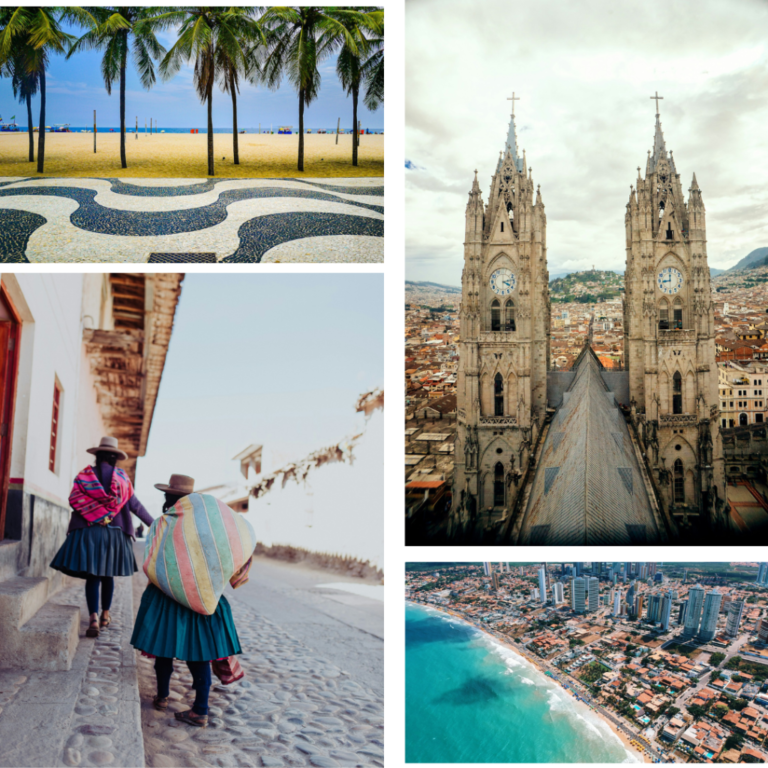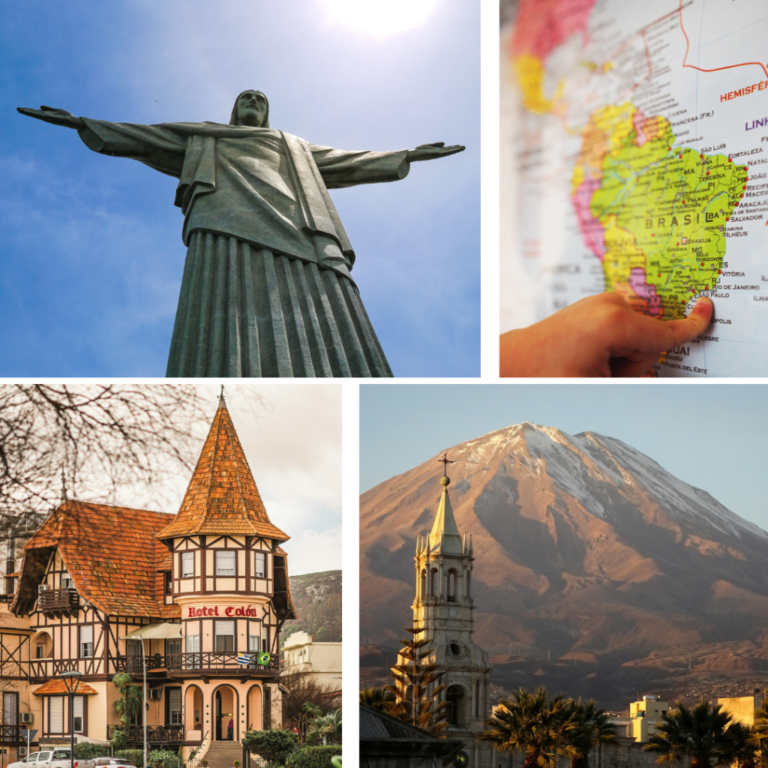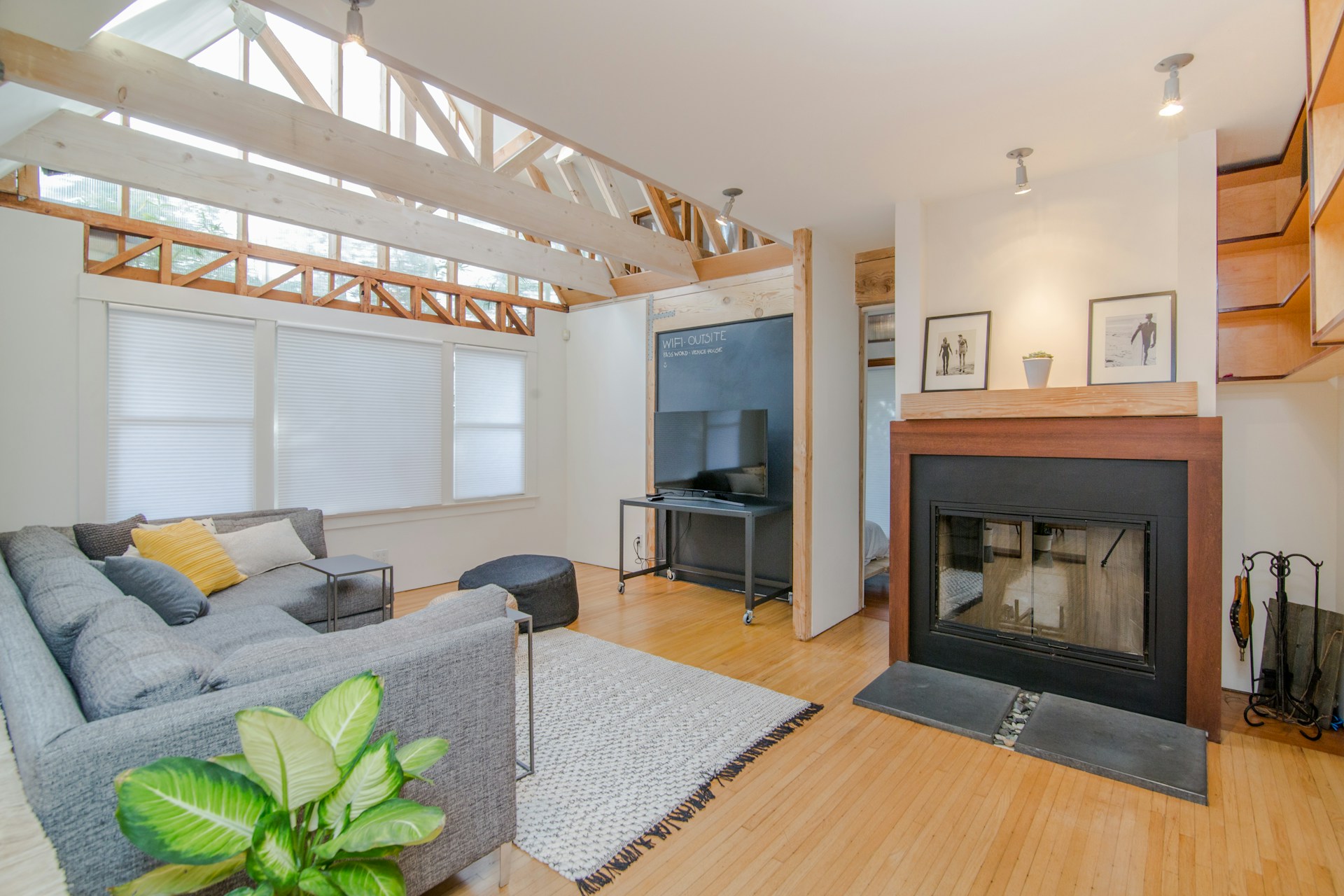Digital Nomads in South America: A Complete Guide
Living and working as a digital nomad in South America will be easier after reading this guide. We tell you all about it!
Plan to live and work as a digital nomad in South America? Then this guide is for you! We tell you everything you need to know to work remotely from one of the many countries that make it up. Argentina, Chile, Uruguay, Brazil, Peru, Ecuador… Which country to choose? What’s the best destination in South America for digital nomads? What are the advantages of each? What about tax and health issues in these countries? You’ll discover all this and more in this article for digital nomads who’re about to embark on the adventure of living and working in South America. Let’s get started!
What are the advantages of being a digital nomad in South America?
South America has become an increasingly attractive destination for digital nomads. If you’re wondering why, the answer is quite extensive. For starters, it offers a unique combination of vibrant culture and natural landscapes that look like something out of a movie. If you’re lucky enough to live and work in this part of the world, you’ll be able to visit destinations such as Machu Pichu, the Uyuni Salt Flat, the Iguazu Falls, the Perito Moreno Glacier, the Torres del Paine, beautiful beaches facing the Atlantic and the Pacific, the Galapagos Islands and many other places.
South America is one of those places that invites you to appreciate nature and be thankful for it. And what could be better than being able to work remotely and combine work and tourism? Undoubtedly, a pleasure that only digital nomads are able to understand. In addition, South America facilitates mobility between countries thanks to its regional agreements. Therefore, you won’t have to spend a lot of time, money and hours of planning to get from one place to the other.
In addition to all these beauties mentioned above, there’s a relatively low cost of living compared to other regions of the Americas or continents, especially Europe, and a variety of climates that allow for a great deal of outdoor activities.
Here we tell you more about the reasons why you should work as a digital nomad in South America.
1. Quality of life
Many South American countries offer a lifestyle that balances remote work with moments of enjoyment in nature and cultural activities. They offer not only a low cost of living, but also the possibility to live in a less accelerated way and more focused on personal wellbeing. The proximity to nature in almost any destination in the region allows digital nomads to lead a balanced life, combining work with outdoor activities such as hiking, water sports and yoga. In addition, the warmth and hospitality of the people, which contributes to a welcoming and supportive atmosphere that facilitates adaptation.
Cities such as Buenos Aires, Medellín and Santiago de Chile offer quality services, a growing technological infrastructure and access to first class medical services.
2. Opportunities for learning and cultural growth
Living and working in South America is an opportunity to learn or improve Spanish and Portuguese, which are the predominant languages in the region. Interaction with local people and immersion in the culture help improve language skills, an added value in the personal and professional lives of digital nomads. In addition, learning about the history and culture of each country broadens the horizon and enriches the experience.
3. Easy access and mobility in the region
South America is well connected to the rest of the world and within the region. There are numerous direct flights from Europe and North America, and getting between countries is easy and affordable.
This allows digital nomads to explore various destinations without the need for extensive planning and high expenses. Low-cost airlines and the intercity bus system connect the region’s main cities and tourist destinations, allowing nomadic life to remain dynamic and full of new experiences. In addition, some borders can be easily crossed by bus, such as between Argentina and Chile or Peru and Ecuador.
4. Good connectivity in cities
In terms of connectivity, large cities in South America offer high-speed internet connection, especially in capital cities and tourist destinations. While this isn’t always present in rural areas, where browsing speeds may be slower, in urban areas you will have no problem working as a digital nomad. Even good quality internet access is increasing in cities such as Lima, Quito and Bogotá, which facilitates remote working. Anyway, don’t forget that with your Holafly eSIM for South America you can connect anywhere at low cost!
On the other hand, the main South American cities have a wide range of co-working spaces and in most of them you can find companies that offer shared accommodation and co-living, which is convenient and saves on housing costs.
5. Great gastronomic variety
For foodies, exploring the cuisine and culinary traditions of South America will be a pleasure. South American cuisine is diverse and reflects the fusion of indigenous, African and European cultures. In each country you will find a wide variety of dishes that reflect these aspects. As well as being delicious, they’re affordable. Be sure to try the Argentinean barbecue, Peruvian and Ecuadorian ceviches and Brazilian feijoada, just some of the delicacies you’ll discover as you explore the region.
6. Affordable cost of living:
Compared to other regions, South America offers a lower cost of living, ideal for those seeking extended stays without spending large sums of money. Cities such as Bogotá, Quito and Lima are accessible and offer affordable rent, food and transport for digital nomads.
7. Natural and cultural attractions
South America has an incredible variety of landscapes ranging from the beaches of Brazil to the vast Andes Mountains and the jungles of the Amazon. Each country has its own cultural and architectural offerings, with cities such as Cusco, Buenos Aires and Cartagena de Indias attracting digital nomads for their history and dynamism.
In addition, many destinations, such as Medellín or Quito, have temperate climates all year round, which facilitates a lifestyle that includes working outdoors. Moderate temperatures allow digital nomads to work on terraces, in parks, or in co-working spaces with outdoor areas, without the complications of extreme weather. This contributes to a better quality of life and a more pleasant routine.

8. Visa and policies favourable to being a digital nomad in South America
Some countries in South America, such as Argentina and Brazil, have developed specific visas for digital nomads, facilitating long-term stay and allowing remote workers to live and work legally without the need for permanent residence or complicated visas.
These visas usually have simple requirements and are a great advantage for those who wish to spend more than three months in the country without legal problems. In addition, many countries in South America have free transit or visa facilitation agreements, which makes moving from one country to another easy and affordable.
9. Growing community of digital nomads:
In cities such as Buenos Aires, Medellín and Lima, a growing community of digital nomads is developing. The opportunity to connect with other remote workers not only facilitates social and cultural integration, but also offers support networks and networking opportunities. These cities are increasingly home to co-working spaces and events for digital nomads, where they can exchange experiences, collaborate on projects and share tips on living and working in the region.
Important: If you are a frequent traveler and want to stay connected without worrying about expensive roaming or looking for a new SIM at every destination, Holafly’s subscription plans are for you. With a single eSIM, enjoy internet in more than 170 countries for a fixed price and no surprises on your bill. Travel without limits and connect easily and securely! 🚀🌍

What cost is associated with the digital nomad visa in South America?
Several South American countries have developed special visas to attract remote workers. These include Argentina, Colombia, Brazil and Ecuador and Chile which offer specific visas for digital nomads. These allow you to reside legally while working for employers abroad. Other countries are considering implementing similar programmes in the coming years, taking advantage of the growing interest in digital nomadism.
Here you can read more about it:
- Argentina: In May 2022, Argentina launched its visa for digital nomads, known as the “Digital Nomad Pass”. This visa allows remote foreign workers to reside in the country for an initial period of 180 days, with the possibility of extension for an additional 180 days. It’s aimed at those who work online for companies or clients outside Argentina.
- Brazil: In January 2022, Brazil introduced a visa for digital nomads that allows foreigners to work remotely from the country. The visa has an initial duration of one year, with the possibility of renewal for an additional year. Applicants must demonstrate a minimum monthly income of $1,500 or a bank reserve of $18,000.
- Colombia: In October 2022, Colombia implemented a visa for digital nomads that allows remote workers to reside in the country for up to two years. Applicants must demonstrate a monthly income equivalent to three times the legal minimum wage in Colombia and have an employment contract or freelance certification with foreign companies.
- Ecuador: Ecuador offers the “Temporary Residency Visa for Remote Workers“, aimed at digital nomads who wish to reside in the country while working for foreign employers. This visa is valid for up to two years and requires applicants to demonstrate a monthly income of at least $1,275.

Top 10: Top destinations to be a digital nomad in South America
South America is very large and the countries that make it up are many. It’s therefore to be expected that there’ll be many options for digital nomads. Of course, not all its cities offer the same opportunities, some being more suitable than others. Here is a top 10 list of the best destinations for digital nomads in South America.
Each of these cities has unique characteristics that make them ideal destinations for remote workers. From the modernity of Santiago to the natural beauty of Florianópolis and the affordability of Cuenca, South America offers a range of options for those looking to work remotely while exploring new cultures and landscapes.
1- Montevideo (Uruguay)
The main reason why Montevideo is one of the best cities to be a digital nomad in South America is its security. In fact, it’s among the safest cities in the region, which is no small detail. At the same time, it stands out for its peaceful atmosphere, ideal for working and enjoying a good quality of life.
Montevideo offers fast internet, modern cafés and co-working spaces and a relatively affordable standard of living. Uruguay is also one of the most stable countries in South America, so you can rest assured that you won’t suffer from inflation. In addition, the banking system makes it easy for foreigners to open accounts, which is ideal for digital nomads.
2- Buenos Aires (Argentina)
Buenos Aires is another of South America’s most incredible cities, both for its cultural and gastronomic scene, its vibrant nightlife and the many outdoor spaces. All this makes it a highly attractive destination for digital nomads looking for a mix of work and entertainment.
Buenos Aires has many co-working spaces and excellent connectivity in neighbourhoods such as Palermo and Recoleta. The cost of living is affordable, especially for those earning a dollar income, allowing access to quality accommodation, good food and entertainment without spending too much. In addition, Argentina has a special visa for digital nomads, which makes it easier for them to stay.
3- Medellín (Colombia)
Medellín is one of the best cities for digital nomads in South America. Known as the “City of Eternal Spring” (because of its year-round mild climate), it offers a modern infrastructure with fast internet and multiple co-working options.
Medellín is a cheap place to live compared to other South American cities, and has an active expat and digital nomad community, especially in the neighbourhoods of El Poblado and Laureles. At the same time, it offers a wide variety of outdoor activities and is close to places that invite you to connect with nature.
4- Lima (Peru)
Peru’s capital is another good option if you want to be a digital nomad in South America. This city with deep indigenous roots and a beautiful historic centre also has a modern face that’s very attractive to remote workers.
On the other hand, it’s a unique destination in South America thanks to its world-renowned gastronomy and dynamic urban environment. For digital nomads, it offers several co-working options and a growing community that makes it easy to adapt to life in the city. It also offers access to the coast and tourist attractions such as Machu Picchu. Lima is cheap in terms of accommodation and food and many digital services are available, making life easier for remote workers.
5- Cuenca (Ecuador)
Besides being a beautiful city, Cuenca is very attractive for digital nomads living and working in Ecuador. It’s famous for its quality of life and its Andean landscapes that allow you to work from the comfort of a flat overlooking the mountains.
Cuenca has a low cost of living, excellent internet access and comfortable working spaces. It’s also a colonial city with a lot of history and architectural beauty. The expatriate and digital nomad community is active and friendly, facilitating cultural exchange and integration.
6- Santiago (Chile)
Another of South America’s most beautiful and attractive cities is the Chilean capital, Santiago. As well as being one of the most modern cities in the region, with a solid infrastructure and growing co-working spaces, it retains a beautiful historic centre and many natural spaces around it.
Internet connectivity in Santiago de Chile is excellent, the environment is safe (although, as in any large city, it always pays to be careful) and provides easy access to a wide range of leisure activities. From the capital, major tourist destinations such as the Andes Mountains and the Chilean coast are accessible, making it an attractive location for digital nomads wishing to explore different regions.
7- Rio de Janeiro (Brazil)
Famous for its carnival, Christ the Redeemer and Sugarloaf Mountain, Rio de Janeiro is undoubtedly one of the most exciting cities in South America. In fact, millions of tourists pass through every year to discover its unique and vibrant scene. Can you imagine living and working there?
Rio de Janeiro has an ideal quality of life for those looking to combine work and leisure. The city offers co-working spaces, good internet connection in urban areas and an outdoor culture that allows you to enjoy iconic beaches and nearby mountains. Although the cost of living can be high in certain areas, neighbourhoods such as Copacabana and Botafogo have a variety of accommodation and connectivity options for nomads.
8- Bogotá (Colombia)
The Colombian capital is another interesting destination for digital nomads in South America. Indeed, Bogotá deserves a mention for its rapid development as a destination for people seeking to live and work abroad from there. It has fast internet, numerous co-working spaces and an active cultural life. Neighbourhoods such as Chapinero and Usaquén are popular with expats and nomads. It also has direct flights to many destinations in South America, facilitating travel within the region.
9- Florianópolis (Brazil)
Florianópolis, also known as “Floripa,” is ideal for digital nomads who want a more relaxed lifestyle by the sea. The city is safe and has fast internet in urban areas, as well as modern co-working spaces. With a growing expatriate community, Florianópolis is an attractive seaside destination with beaches, trails and a welcoming atmosphere.
10- Quito (Ecuador)
Quito, the Ecuadorian capital, offers an affordable cost of living, good connectivity and an urban environment rich in culture and history. The city has well-preserved colonial architecture and a vibrant city life. It’s located close to the equator, so the climate is temperate and pleasant all year round. It has a friendly expat community and reasonably priced accommodation options.

How to enter and change countries as a digital nomad in South America?
Most countries in South America allow citizens of certain foreign countries, such as the European Union and the United States, to enter without a visa for stays of up to 90 days. In addition, regional agreements such as Mercosur facilitate the movement of foreigners between South American countries, which is ideal for digital nomads wishing to explore different destinations.
To enter the region and move between countries, it’s advisable to have international health insurance to cover health expenses in case of emergencies. It’s even a requirement for entry to some countries, while in others it’s optional, but still recommended.
What is the cost of living in South America?
The cost of living in South America varies considerably depending on the country and the city where you decide to settle, but in general, it’s quite affordable compared to destinations in Europe or North America. For example, in cities such as Buenos Aires or Lima, renting a flat in the city centre can cost between $400 and $600 per month, while in more expensive cities such as Santiago or Montevideo, the cost can be double.
Let’s look at some examples of flat rentals in South America:
- Argentina: Rent a flat from $400 a month.
- Colombia: Rent in Medellín or Bogotá from $500 per month.
- Chile: Rent in Santiago from $700 per month.
- Peru: Rent in Lima from $450 per month.
On average, the monthly cost of living as a digital nomad in South America, including accommodation, food, transport and leisure activities, can range from $800 to $1,500:
- Accommodation: $250 to $700 per month for one-bedroom flats in downtown areas.
- Food: On average, a person can spend between $150 and $300 a month on food if they cook at home, while eating in restaurants ranges from $5 to $20 per meal.
- Transport: Public transport is inexpensive, with bus and underground fares ranging from $0.30 to $1.50 each way. Shared mobility and bike rental options are also available in many cities.
- Co-working spaces: Daily rates range from $10 to $15, while a monthly membership can cost between $100 and $200.
- Additional leisure expenses: Recreational activities, cultural events and outdoor activities are affordable. Cities offer many low-cost or even free plans, such as visits to nature parks, museums and local events.
How to manage tax payments in South America?
Another factor to pay attention to if you’re going to be a digital nomad in South America is the payment of taxes. To begin with, this’ll depend on your country of tax residence and the length of time you stay in the region. Note that some South American countries have double taxation agreements with other countries, which can help you avoid paying tax twice. It’s advisable to check the tax laws of the country where you’ll be living and, if necessary, seek specialised accounting advice to optimise your tax situation.
Digital nomad in South America: Frequently Asked Questions
Security varies from country to country and city to city. For example, places like Buenos Aires, Santiago and Medellín are safe in specific areas, while there are neighbourhoods and areas that you should avoid if you don’t want your belongings to be stolen. In any case, it’s always a good idea to research and choose well where to live and work.
Although it isn’t compulsory, Spanish makes everyday life easier. In the major cities you’ll find people who have a good command of English (especially young people), but learning the basics of the local language is useful for the experience.
Internet quality varies from country to country and city to city. Capital cities and tourist cities are generally well connected, so you should have no problem working in any of them. However, in rural or mountainous areas, speed may be limited.
International insurance is available to cover emergencies in most South American countries. It’s important to check that the insurance includes care in the countries to be visited and has good medical coverage.
Yes, in most South American countries, it’s possible to use dollars for some transactions. There are also options for transfer and digital banking services to facilitate the handling of money in different currencies.





 Language
Language 


















 No results found
No results found








